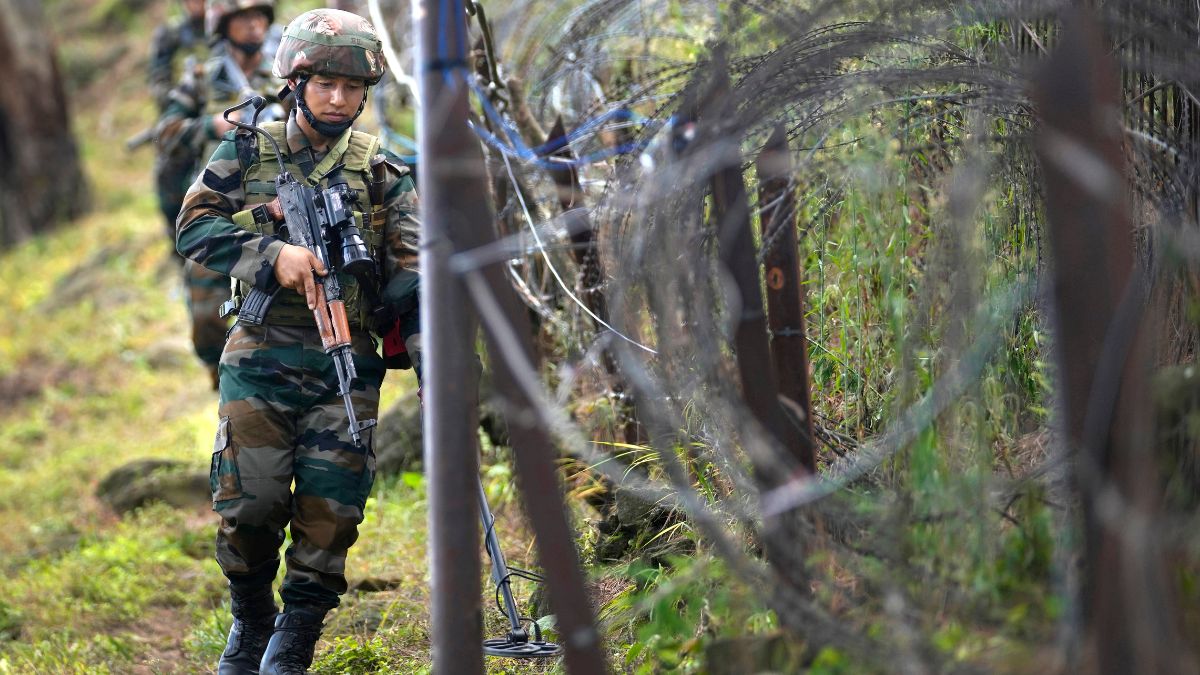Tensions between India and Pakistan are mounting post the terror attack in Pahalgam that killed 26 people, mostly tourists. The Pakistani Army has started unprovoked firing along the Line of Control (LoC) in Jammu and Kashmir since New Delhi suspended the Indus Water Treaty on April 24.
Fearing a potential escalation, some villagers in Jammu who live near the LoC have begun preparing their underground bunkers. They are cleaning and stocking essential supplies in these bunkers, informally known as “Modi bunkers”.
Let’s take a closer look.
Villagers prepare ‘Modi bunkers’
Residents of villages along the LoC are preparing for a potential intensification of border tensions between India and Pakistan. As per an ANI report, villagers of Salotri and Karmara in Jammu and Kashmir’s Poonch district are cleaning their old bunkers and stockpiling essentials as a precautionary step.
These villages’ location is close to Pakistan military posts, further raising fear among its residents.
Videos shared by the news agency showed the villagers keeping beds and blankets inside the bunkers.
“The people had forgotten the bunkers. The bunkers are being cleaned again now. There is an atmosphere of fear, but we hope harmony will prevail in the valley,” a resident of Karmara village told ANI.
Another villager condemned the deadly Pahalgam terror attack and expressed support for the government. “Earlier, there used to be firing incidents in this area. Our village is located near the LoC. We are cleaning the bunkers so that we can move our family to safety during such incidents. We are thankful to the central government for providing us with such bunkers,” he said.
Their concerns come as Pakistani troops have resorted to firing at several locations in Jammu and Kashmir along the LoC. Amid worsening ties, security forces remain on high alert in the region. The administration has also urged civilians to stay vigilant.
Why are they called ‘Modi bunkers’?
These underground bunkers are informally referred to as “Modi bunkers” after Prime Minister Narendra Modi’s name.
The bunkers are meant to keep residents living near the border safe from shelling during escalation with Pakistan along the International Border (IB) and the Line of Control.
Many of these bunkers were built during PM Modi’s second tenure, when the Central government stepped up efforts to ensure the safety of civilians living near border areas prone to conflicts, as per a Times of India (TOI) report.
The government previously funded and provided technical assistance to build individual and community bunkers in vulnerable areas like Poonch and Rajouri in Jammu.
In 2021, about 8,000 underground bunkers were constructed along the LoC and IB in Jammu province, officials reportedly said.
Cross-border firing along LoC
Pakistani troops launched firing towards India along the Line of Control for a fifth straight night. They continued unprovoked shooting at several places in J&K, officials said Tuesday (April 29).
“During the night of April 28-29, the Pakistan Army resorted to unprovoked small arms firing across the LoC in areas opposite Kupwara and Baramulla districts, as well as the Akhnoor sector,” a defence spokesperson was quoted as saying by PTI.
The Indian Army responded in a “measured and effective manner” to the provocation, he added.
Since India put the Indus Water Treaty with Pakistan in ‘abeyance’ last Thursday, Pakistani troops have begun unprovoked firing at various locations along the LoC.
The Pakistani Army initiated small arms firing at many posts along the LoC in Kupwara and Baramulla districts of north Kashmir. It later expanded its ceasefire violation to the Poonch sector and Akhnoor in Jammu.
No casualties have been reported on the Indian side so far.
The tensions between India and Pakistan increased after the terror attack in the scenic meadows of Baisaran near Jammu and Kashmir’s Pahalgam on April 22. India announced a raft of retaliatory measures against Pakistan after the massacre. Islamabad also responded with tit-for-tat steps, leading to ties between the neighbours taking a further nosedive.
With inputs from agencies
)